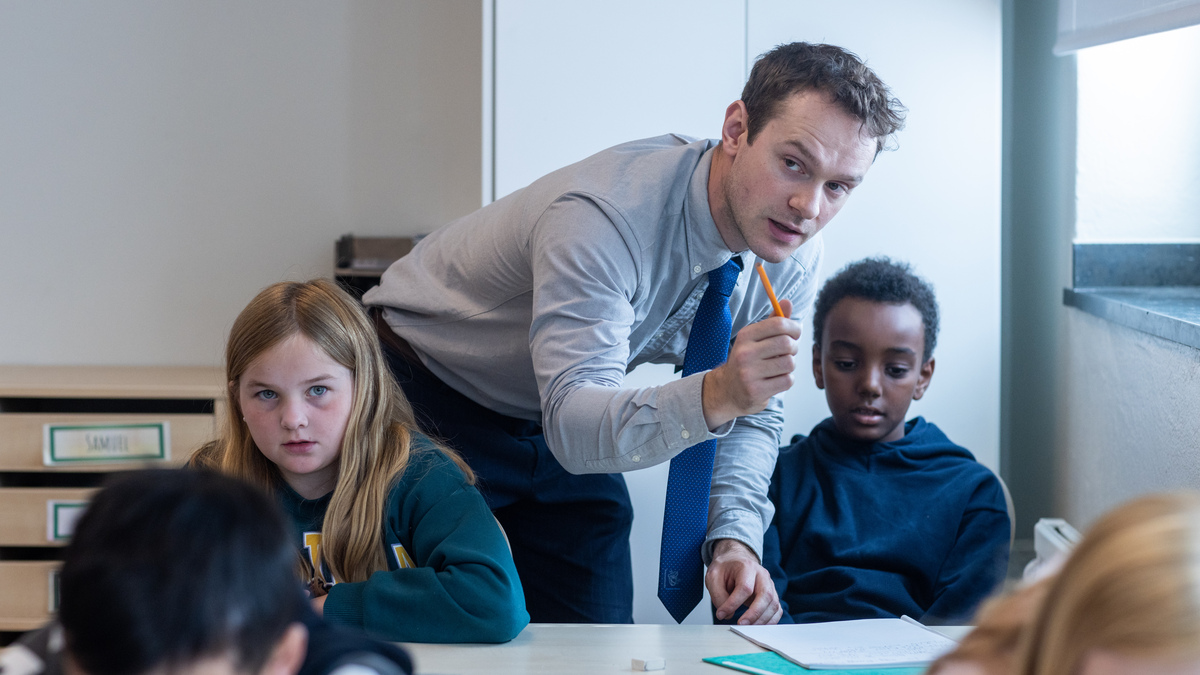News | 19 January 2023
A good school environment is as important as skilled teachers
Talented teachers are essential for students to reach their full potential. A safe and pleasant school environment is just as important though. Internationella Engelska Skolan places equal focus on “pastoral” and “academics”. In this conversation, Annakarin Johansson Sandman, head of academics, and Jeremy Elder, head of pastoral, explain what these concepts mean. They also give us their opinion on what is needed to create the best conditions for all students to develop according to their unique capabilities.

How do you define the concept of “quality” in teaching?
“It’s about providing knowledge in a way that creates a meaningful learning experience for the student. In other words, the student doesn’t simply assimilate the knowledge; they develop an interest and curiosity in a subject. All students should be given the chance to absorb the information that the teacher conveys, regardless of their individual abilities. In this way, the student isn’t just a passive recipient of information, instead they develop their own ability to question and to expand their knowledge. Additionally, the student has to learn ’grit’, that is the importance of putting in the effort to achieve their goals,” says Annakarin Johansson Sandman.
“Skilled teachers are essential for us to succeed in this. It also requires an environment where students feel safe and seen – and where every student’s unique needs are met. Our goal is for 100 per cent of the students to qualify for upper secondary school when they graduate from our compulsory schools – and our duty is to ensure that they are given the best chance to do that,” she continues.
What does “pastoral” mean and why is it important?
“Pastoral means student care, student health and safety – in other words everything that takes place in the school that is not teaching. It’s about creating the best possible environment for students to learn and for teachers to teach,” says Jeremy Elder. “School is our children’s working environment, a place where they spend a large proportion of their waking hours and where they are expected to develop into responsible adults who make a positive contribution to society. So we put great effort into creating a calm environment to minimise distractions.”
”This in turn requires an organisation with clear structures and procedures. Nobody should feel unsure about how they are supposed to do things. Good communication is also essential in this, as well as trust and strong relationships between students, teachers and parents. An additional important factor is the constant presence of safe adults who act as good role models and can quickly deal with any problems as they arise,” he adds.
Which of these aspects is most important?
“Both aspects are intricately linked. Each needs the other. That’s why Jeremy and I, as well as the people in charge of academics and pastoral in each school, work so closely together,” says Annakarin Johansson Sandman.
“We pay great attention to ensuring that students succeed both academically and socially. What we mean by this is that students are encouraged to interact with others respectfully and that they are open and curious about the world. To succeed in this we must provide a safe and secure environment where students flourish, where their emotional and social health are nurtured. In many ways it’s about the fundamentals of bringing up children,” says Jeremy Elder.
“It also involves being a good role model. Which is why our school principals learn every student’s name and wait outside the schools every morning to welcome students by name. It’s also why our employees are constantly present in the corridors, spend time with the students during breaks and eat lunch with them,” he continues.
How do you create a culture that’s conducive to learning?
“Apart from what we’ve already mentioned, such as clear structures and a calm and safe environment, strong leadership is also necessary. IES operates under a set of core values that are based on a number of fundamental principles – and it’s up to the principal of each school to ensure that these are observed. The principal determines the culture. We have to recruit the right people, teachers as well as other support staff. Everybody has to have the same school vision – and they must be able to put that into practice,” says Annakarin Johansson Sandman.
“It’s also important for us to remain focused on the students – always. We want to sow the seeds that help grow our children into good adults. So they must be able to handle conflicts and learn that adversity isn’t dangerous – and never to give up. That’s ’grit’ in our world, and it’s what we want the students to take with them when they leave us,” adds Jeremy Elder.

To read the full quality report, click here.